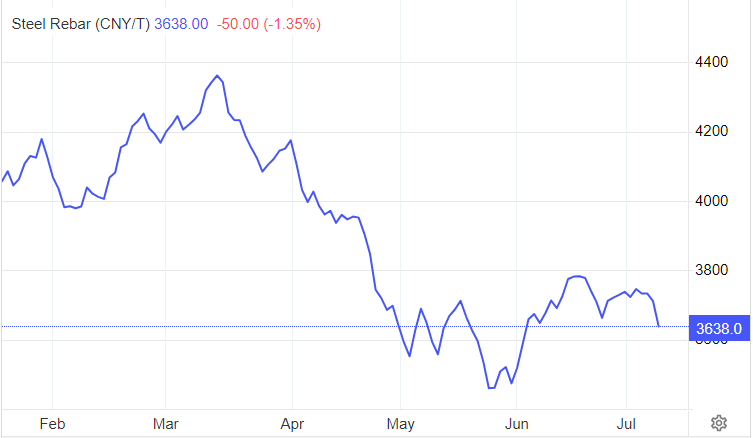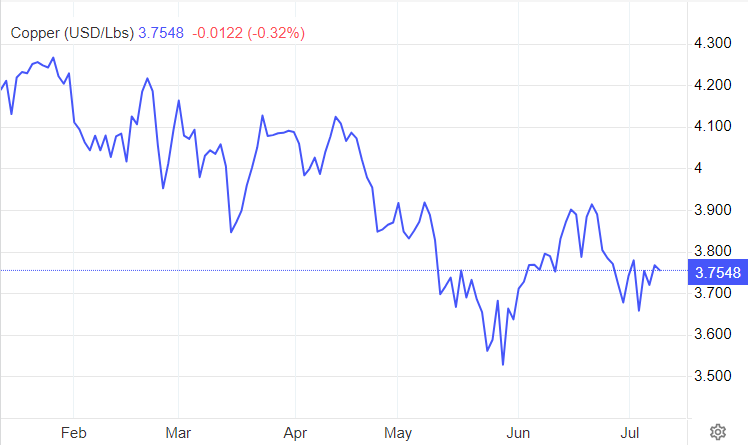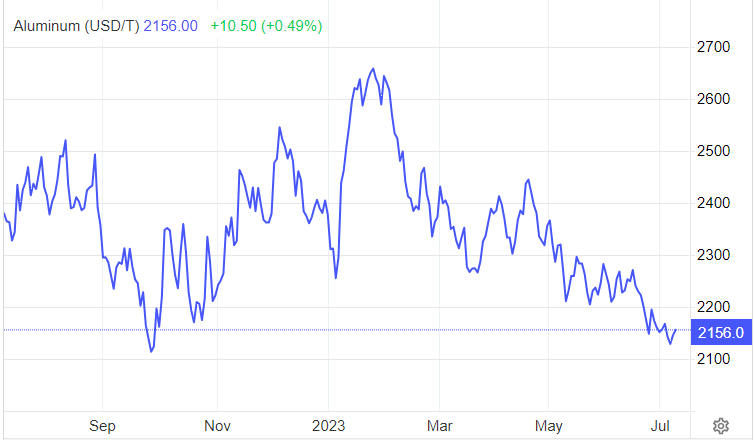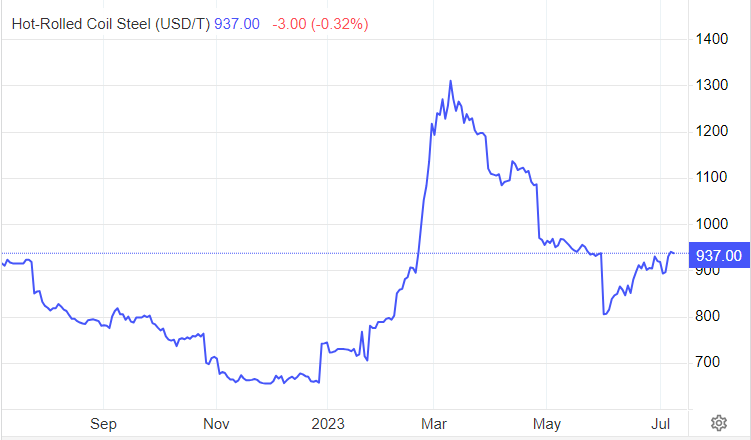Last Week
Copper prices experienced a slight decline on Tuesday as the dollar strengthened, and weak economic data from China, indicated a pessimistic demand outlook. The three-month copper price on the London Metal Exchange (LME) decreased by 0.6% to $8,355.20 per metric ton, while the most-traded August copper contract on the Shanghai Futures Exchange (SHFE) rose marginally by 0.2.1% to $9,426.20 per metric ton. BMI has revised its forecast for the average copper price in 2023 to US$8,810 per ton, down from the previous forecast of $8,995 per ton.
Analysts anticipate another imminent increase in steel prices, reflecting a growing consensus. Moreover, Tangshan, a prominent steel province in China, is implementing production restrictions of 50% to address air pollution concerns. The competition between high-grade and low-grade nickel, as well as stainless steel scrap, is intensifying, which is likely to drive up raw material prices. Reports indicate that Tangshan has requested 11 A-rated steel mills to proactively reduce production, while B-rated and lower-rated mills are required to shut down 50% of their sintering facilities from July 1st to 31st due to worsening air quality.
These actions contribute to the latest expectations of Asian analysts regarding a reduction in steel supply, thereby supporting steel prices. Last week, rebar steel benchmarks rose by 0.8%, hot-rolled coil by 0.9%, and wire rod by 0.5% on the Shanghai Futures Exchange (SHFE).
Simultaneously, China aims to increase the share of scrap used in stainless steel production from the current 20% to 25% by the end of 2025. This increase, amounting to nearly 1.8 million tons of stainless steel scrap per year, will significantly reduce the availability of nickel-bearing scrap, leading to higher prices worldwide.
According to the latest Resources and Energy quarterly report from the Australian government, iron ore prices are expected to ease as global demand softens. The projected average benchmark iron ore price is estimated to steadily decline from around $96 per ton in 2023 to approximately $76 per ton by 2025. China, responsible for nearly 65% of global iron ore demand, is expected to experience a modest decrease in total steel output.
On Monday, the LME aluminum cash bid price reached US$2,100 per ton, while the LME aluminum official settlement price stood at US$2,110 per ton. Compared to the price of US$2,385 per ton one year ago on July 1, the LME aluminum spot price has declined by US$276 per ton or 11.7% year-on-year, settling at its current level. Weaker-than-expected consumption recovery and an accumulation of aluminum ingot inventories are contributing factors to the declining prices. This weakened support for aluminum prices, and there is a possibility that SHFE aluminum may drop below RMB 18,000 per ton in the short term.
As of July 10th, 10:00 GMT, LME tin slid by 1.8% to $27,790, zinc shed 0.7% to $2,338, lead and aluminum remained unchanged at $2,050.31 and $2,141.32 per ton, respectively, while nickel moved down by 1% to $20,570.
This Week
Overall, metal prices have shown increasingly bearish short-term movement over the past few weeks. Notably, HRC continues its downward trend, and nickel is experiencing significant bearish pressure. While prices may continue to decline in the short term, the long-term trend remains uncertain.
Furthermore, steel demand in China registered a year-on-year decline of 3% in April, compared to an 8% increase in March. This drop has caused steel rebar futures to decrease by nearly 18% since late March, with an expected rebound this week.
Despite the short-term downtrend, prices indicate the potential for further declines, suggesting an increasing bearish pressure in HRC markets. Consequently, prices must reverse course to support a bullish HRC market.





